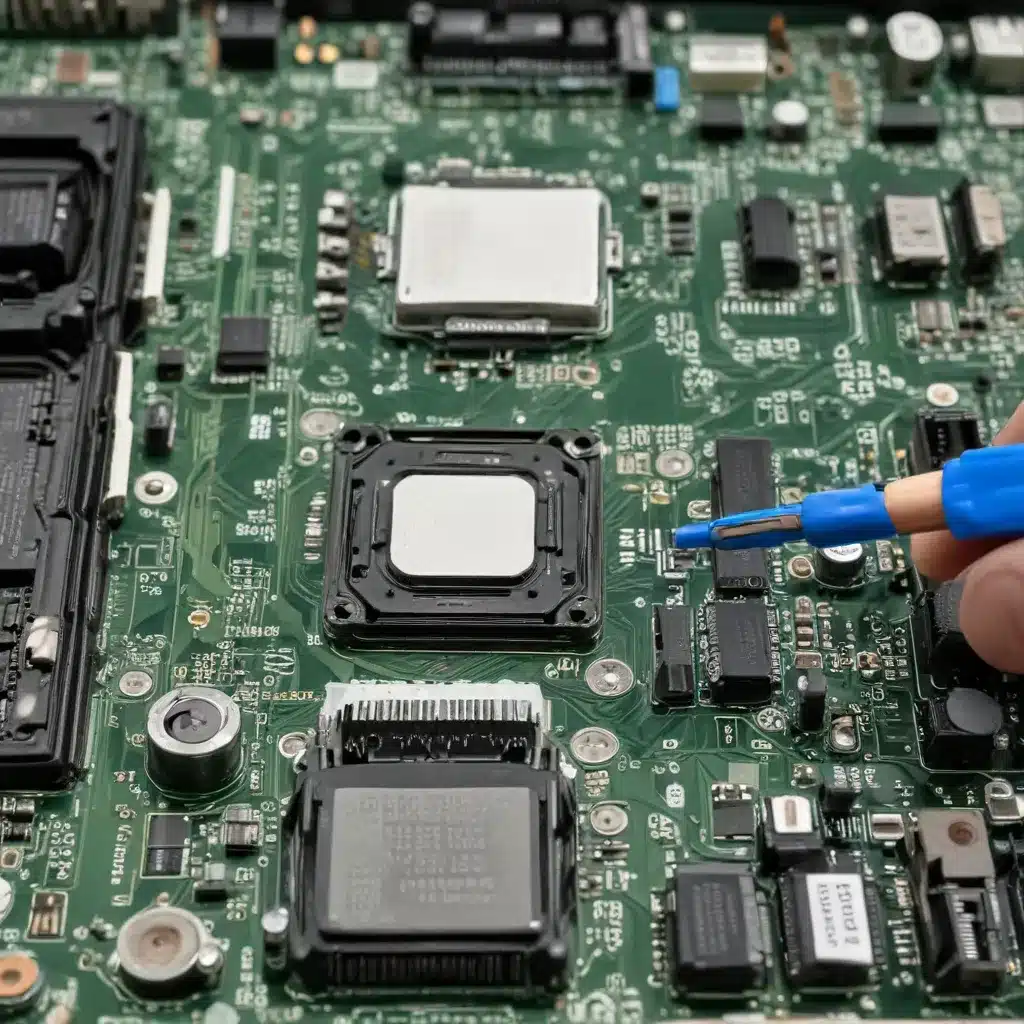
Understanding the Challenges of Laptop Motherboard Replacement
As an experienced IT professional, I’ve seen firsthand the potential benefits and challenges of reviving older laptops through motherboard replacement. While it’s an enticing idea, the reality is that each laptop model presents its own unique set of obstacles that must be carefully navigated.
The primary issue lies in the fact that laptop hardware is not standardized like desktop PCs. Each manufacturer designs their laptops with custom chassis, ports, and component placements. This means that a replacement motherboard, even from the same brand, may not necessarily fit or interface properly with the existing laptop hardware and enclosure.
Compounding this challenge is the lack of widely available or universal adapter solutions. Unlike desktop PCs, where you can relatively easily swap out a motherboard and reuse most other components, laptops require a much more bespoke approach. Things like screen connectors, keyboard interfaces, and power delivery all need to be carefully considered and potentially modified to work with a new motherboard.
Evaluating the Feasibility of Laptop Motherboard Swaps
Before embarking on a laptop motherboard replacement project, it’s crucial to carefully assess the specific model you’re working with and the available options. Some key factors to consider include:
-
Chassis Compatibility: Measure the available space within the laptop’s enclosure and compare it to the dimensions of potential replacement motherboards. Ensure the new board will physically fit without interfering with other components.
-
Port Alignment: Examine the existing laptop’s port layout and determine if the new motherboard’s I/O can be properly aligned. This may require custom 3D-printed adapters or extensive chassis modifications.
-
Component Connections: Identify how the existing display, keyboard, touchpad, and other peripherals connect to the motherboard. Sourcing the appropriate cables or adapters to interface with the replacement board can be challenging.
-
Power Delivery: Laptops often have custom power supplies and battery connections. Ensure the replacement motherboard can be properly powered and recharged without compromising functionality.
-
Software Compatibility: Consider the operating system and drivers required for the new motherboard. Older laptops may not have readily available support for modern hardware, necessitating custom driver development or the use of alternative operating systems.
While these obstacles may seem daunting, there are some promising solutions emerging that could make laptop motherboard replacement more feasible. One such example is the Framework Laptop, a modular and customizable device that allows for easy motherboard swaps.
Leveraging the Framework Laptop for Laptop Motherboard Replacement
The Framework Laptop is a unique device that offers a modular design, allowing users to easily replace key components, including the motherboard. This approach could potentially be extended to reviving older laptop models by swapping in a Framework motherboard.
The primary advantage of the Framework Laptop is its standardized motherboard design, which could potentially be adapted to fit into the chassis of an older laptop. While this would still require custom 3D-printed adapters and extensive modifications, the modular nature of the Framework system may make it a more viable option compared to traditional laptop motherboard replacement.
One promising idea proposed by the Framework community is the concept of a “Frankenpad” – a project to shoehorn a Framework motherboard into the chassis of an older ThinkPad laptop. This would involve designing and 3D-printing custom mounting brackets and adapters to interface the Framework board with the existing laptop’s components.
However, it’s important to note that this would be an extremely complex and labor-intensive endeavor. The mechanical and electrical challenges of connecting the Framework motherboard to an older laptop’s display, keyboard, touchpad, and other peripherals should not be underestimated. Successful projects would likely require significant technical expertise and access to specialized tools and equipment.
Reviving Older Laptops with Alternative Solutions
While the prospect of motherboard replacement may be enticing, it’s not the only way to breathe new life into an aging laptop. There are several other more practical and cost-effective options to consider:
-
Hardware Upgrades: Even if you can’t replace the motherboard, you may be able to upgrade other components, such as the RAM, storage, or even the CPU (if the laptop supports it). These upgrades can significantly improve performance and extend the useful life of the device.
-
Operating System Migration: Transitioning an older laptop to a lightweight Linux distribution can often provide a significant performance boost compared to the original Windows installation. This can be an effective way to revive a sluggish machine without major hardware changes.
-
Repurposing: If the laptop is no longer suitable for general-purpose computing, consider repurposing it for a specific task, such as a media server, a retro gaming machine, or a dedicated device for a family member with more modest computing needs.
-
Donation or Recycling: If the laptop is truly beyond repair or repurposing, consider donating it to a local charity or recycling center. This helps prevent the device from ending up in a landfill and potentially allows someone else to make use of its components.
Conclusion: Prioritizing Practical Solutions for Laptop Revival
While the prospect of reviving an older laptop through motherboard replacement is intriguing, the reality is that it’s a complex and challenging endeavor that requires significant technical expertise and specialized equipment. For most users, alternative solutions, such as hardware upgrades, operating system migrations, or repurposing, may be a more practical and cost-effective way to breathe new life into an aging device.
That said, the emergence of modular and customizable laptops like the Framework Laptop may open up new possibilities for laptop motherboard replacement in the future. As this technology continues to evolve, we may see more accessible and user-friendly solutions for reviving older laptops. Until then, IT professionals and tech enthusiasts should carefully weigh the pros and cons of any laptop revival project and prioritize practical, sustainable, and cost-effective solutions that best meet the needs of their users.












